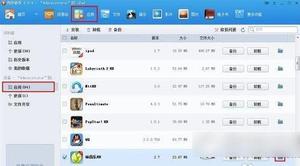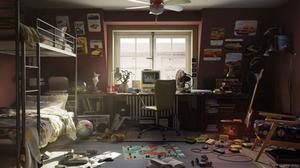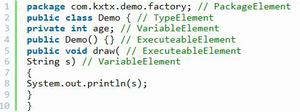如何写Java文档注释(Java Doc Comments)

感谢原文作者:李舜阳
原文链接:https://www.cnblogs.com/boring09/p/4274893.html
具体注释查看:菜鸟教程
本文翻译自How to Write Doc Comments for the Javadoc Tool,但是精简了一些私以为不重要的东西
文档注释概览
“文档注释”(Java Doc Comments)是专门为了用javadoc工具自动生成文档而写的注释,它是一种带有特殊功能的注释。
文档注释与一般注释的最大区别在于起始符号是/**而不是/*或//。
比如:
/*** 这是文档注释
*/
/*
* 这是一般注释
*/
// 这是一般注释
在一些IDE(比如Eclipse)中,文档注释会以不同于普通注释的颜色高亮显示。
此外,文档注释只负责描述类(class)、接口(interface)、方法(method)、构造器(constructor)、成员字段(field)。相应地,文档注释必须写在类、接口、方法、构造器、成员字段前面,而写在其他位置,比如函数内部,是无效的文档注释。
文档注释采用HTML语法规则书写,支持HTML标记(tag),同时也有一些额外的辅助标记。需要注意的是,这些标记不是给人看的(通常他们的可读性也不好),他们的作用是为了javadoc工具更好地生成最终文档。所以,虽然有些标记写起来麻烦且看着不直观,还是要老老实实按规矩写滴。
文档注释的基本内容
一个文档注释由两部分组成:
/*** 描述部分(description)
*
* 标记部分(block tags)
*/
描述部分自然不用多说,所谓的标记符号指的是@param, @return, @see之类的,相信只要看过开源java代码的话应该都见过。
下面是一个描述一个方法的文档注释的例子
/** * Returns an Image object that can then be painted on the screen.
* The url argument must specify an absolute {@link URL}. The name
* argument is a specifier that is relative to the url argument.
* <p>
* This method always returns immediately, whether or not the
* image exists. When this applet attempts to draw the image on
* the screen, the data will be loaded. The graphics primitives
* that draw the image will incrementally paint on the screen.
*
* @param url an absolute URL giving the base location of the image
* @param name the location of the image, relative to the url argument
* @return the image at the specified URL
* @see Image
*/
public Image getImage(URL url, String name) {
try {
return getImage(new URL(url, name));
} catch (MalformedURLException e) {
return null;
}
}
需要注意的几点:
第一行以特殊的文档定界符
/**开头在描述段落和标记段落之间空一行,描述段落和标记段落必须分开,不能揉在一起,描述段落必须在标记段落之前
每一行注释都应该跟后面描述的类、方法等保持同样距离的缩进,比如这样就是错误的
class Image {/**
* 没有跟下面的方法保持同样的缩进
*/
public Image getImage(URL url, String name) {
...
}
}
- 从javadoc 1.4之后,除第一行和最后一行外,可以省略其他行的前导星号(*),但是一般不这么做
描述部分(Description)
描述部分的第一行应该是一句对类、接口、方法等的简单描述,这句话最后会被javadoc工具提取并放在索引目录中。
怎么界定第一句话到哪结束了呢?答案是跟在第一个句号(英文标点)之后的tab、空行或行终结符规定了第一句的结尾。
例如下面这句注释,第一句的结尾是Prof.:
/*** This is a simulation of Prof. Knuth's MIX computer.
*/
除了普通的文本之外,描述部分可以使用:
HTML语法标签,例如
<b>xxx</b>javadoc规定的特殊标签,例如
{@link xxx}。标签的语法规则是:{@标签名 标签内容}
需要注意的地方:
标签在有javadoc工具生成文档时会转化成特殊的内容,比如
{@link URL}标签会被转化成指向URL类的超链接如果注释包含多段内容,段与段之间需要用
<p>分隔,空行是没用的最后结尾行
*/和起始行不同,这里只有一个星号为了避免一行过长影响阅读效果,务必将每行的长度限制在80个字符以内
善用javadoc工具的复制机制避免不必要的注释:
如果一个方法覆盖了父类的方法或实现了接口种的方法,那么javadoc工具会在该注释里添加指向原始方法的链接,此外如果新方法没有注释,那么javadoc会把原始方法的注释复制一份作为其注释,但是如果新方法有注释了,就不会复制了。
注释风格:
- 使用
<code>关键字</code>来强调关键字,建议强调的内容有:java关键字、包名、类名、方法名、接口名、字段名、参数名等 - 控制
{@link xxx}的数量,太多的链接会使文档的可读性很差,因为读者总是跳来跳去。不要出现相同的链接,同样的链接只保留第一个;不要为java自带的内容或是常识性的内容提供链接 - 描述一个方法时,应当只保留方法名字,不要附带方法的参数。比如有个方法是
add(Object obj),那么用add指代该方法即可,而不是add(Object obj) - 英文注释可以是短语也可以是句子。如果是句子,首字母要大写,如果是短语,首字母小写。
- 英文注释使用第三人称,而不是第二人称。比如:
/*** Gets the label(建议)
*/
/**
* Get the label(不建议)
*/
- 方法的注释应该以动词或动词词组开头,因为方法是一个动作。比如:
/*** Gets the label of this button(建议)
*/
/**
* This method gets the label(不建议)
*/
- 当描述类、接口、方法这类的概念时,可以不用指名"类"、“接口”、"方法"这些词语,比如:
/*** A button label (建议)
*/
/**
* This field is a button label (不建议)
*/
- 英文使用this而不是the指代当前类,比如:
/*** Gets the toolkit for this component (建议)
*/
/**
* Gets the toolkit for the component (不建议)
*/
- API名应该是能够简单自我说明的,如果文档注释只是简单重复API的名称还不如没有文档,所以文档注释应该至少提供一些额外信息,否则干脆不要注释
- 英文注释避免拉丁风格的缩写。比如使用"also knwon as"而不是"aka", 使用"that is"或"to be specific"而不是"i.e.",使用"for example"而不是"e.g.",使用"in other words"或"namely"而不是"viz."
标记部分(Tag)
标记部分跟在描述部分之后,且前面必须有一个空行间隔
常见标记:
@author作者,没有特殊格式要求,名字或组织名称都可以@version软件版本号(注意不是java版本号),没有特殊格式要求@param方法参数,格式为:@param参数名称 参数描述Ⅰ 可以在参数描述中说明参数的类型
Ⅱ 可以在参数名称和参数描述之间添加额外的空格来对齐
Ⅲ 破折号或其他标点符号不能出现在参数描述之外的地方
@return方法返回值,格式为:@return 返回值描述,如果方法没有返回值就不要写@return@deprecated应该告诉用户这个API被哪个新方法替代了,随后用@see标记或{@link}标记指向新API,比如:
/*** @deprecated As of JDK 1.1, replaced by
* {@link #setBounds(int,int,int,int)}
*/
@throws(或@exception)包含方法显式抛出的检查异常(Checked Exception),至于非显示抛出的其他异常(Unchecked Exception),除非特别有必要,否则就别写了。一个原则就是,只记录可控的问题,对于不可控的或不可预测的问题,不要往上面写。
检查异常:在try语法块中触发,在catch块中捕获的异常,这些异常会由编译器在编译阶段检查并强制程序员处理
非检查异常:包括运行时异常(RuntimeException)和错误(Error)。
标记使用
注释风格:
- 按照如下顺序提供标记
@author(只出现在类和接口的文档中)@version(只出现在类和接口的文档中)
@param(只出现在方法或构造器的文档中)
@return(只出现在方法中)
@exception(从java1.2之后也可以使用@thrown替代)
@see
@since
@serial(也可以使用@serialField或@serialData替代)
@deprecated
此外,如果有多个相同标记,也要注意顺序:
多个@author标记,应该按照时间顺序排列,即原作者应该排在第一个位置多个@param标记,应该按照参数定义的顺序排列
多个@exception(或是@thrown)应该按照异常的字母顺序排列
多个@see标记,应该按照注释的逻辑顺序排列,即从最近的到最远的,从最具体的到最一般的
- 必须包含的标记
如果方法有参数,@param标记必须包含,而且每个对应一个参数如果方法有返回值,@return标记必须包含
其他注释
- 包级别的文档注释
从java1.2起允许包级别的文档注释,用以描述包信息。每个包都可以有自己的包文档注释,这些注释被写在叫package.html的单独文件中,并且放至于与源码(*.java)相同的路径下,注意,一定不能单独放置在其他路径。
javadoc工具按照以下流程处理package.html:
把主要内容复制到最终生成的package-summary.html文件中
处理@see, @since, 或{@link}标记
把第一句话复制到javadoc的索引中
在包注释主要介绍一下这个包大致是做什么用的、背景信息、在使用方面需要注意的地方等等信息
- 匿名、内部类的文档注释
javadoc不会提取内部类的文档注释,所以如果想要在最终生成的文档中包含内部类的信息,方法就是——写在外部类的文档注释里。。
一个复杂的文档注释例子
/** * Graphics is the abstract base class for all graphics contexts
* which allow an application to draw onto components realized on
* various devices or onto off-screen images.
* A Graphics object encapsulates the state information needed
* for the various rendering operations that Java supports. This
* state information includes:
* <ul>
* <li>The Component to draw on
* <li>A translation origin for rendering and clipping coordinates
* <li>The current clip
* <li>The current color
* <li>The current font
* <li>The current logical pixel operation function (XOR or Paint)
* <li>The current XOR alternation color
* (see <a href="#setXORMode">setXORMode</a>)
* </ul>
* <p>
* Coordinates are infinitely thin and lie between the pixels of the
* output device.
* Operations which draw the outline of a figure operate by traversing
* along the infinitely thin path with a pixel-sized pen that hangs
* down and to the right of the anchor point on the path.
* Operations which fill a figure operate by filling the interior
* of the infinitely thin path.
* Operations which render horizontal text render the ascending
* portion of the characters entirely above the baseline coordinate.
* <p>
* Some important points to consider are that drawing a figure that
* covers a given rectangle will occupy one extra row of pixels on
* the right and bottom edges compared to filling a figure that is
* bounded by that same rectangle.
* Also, drawing a horizontal line along the same y coordinate as
* the baseline of a line of text will draw the line entirely below
* the text except for any descenders.
* Both of these properties are due to the pen hanging down and to
* the right from the path that it traverses.
* <p>
* All coordinates which appear as arguments to the methods of this
* Graphics object are considered relative to the translation origin
* of this Graphics object prior to the invocation of the method.
* All rendering operations modify only pixels which lie within the
* area bounded by both the current clip of the graphics context
* and the extents of the Component used to create the Graphics object.
*
* @author Sami Shaio
* @author Arthur van Hoff
* @version %I%, %G%
* @since 1.0
*/
public abstract class Graphics {
/**
* Draws as much of the specified image as is currently available
* with its northwest corner at the specified coordinate (x, y).
* This method will return immediately in all cases, even if the
* entire image has not yet been scaled, dithered and converted
* for the current output device.
* <p>
* If the current output representation is not yet complete then
* the method will return false and the indicated
* {@link ImageObserver} object will be notified as the
* conversion process progresses.
*
* @param img the image to be drawn
* @param x the x-coordinate of the northwest corner
* of the destination rectangle in pixels
* @param y the y-coordinate of the northwest corner
* of the destination rectangle in pixels
* @param observer the image observer to be notified as more
* of the image is converted. May be
* <code>null</code>
* @return <code>true</code> if the image is completely
* loaded and was painted successfully;
* <code>false</code> otherwise.
* @see Image
* @see ImageObserver
* @since 1.0
*/
public abstract boolean drawImage(Image img, int x, int y,
ImageObserver observer);
/**
* Dispose of the system resources used by this graphics context.
* The Graphics context cannot be used after being disposed of.
* While the finalization process of the garbage collector will
* also dispose of the same system resources, due to the number
* of Graphics objects that can be created in short time frames
* it is preferable to manually free the associated resources
* using this method rather than to rely on a finalization
* process which may not happen for a long period of time.
* <p>
* Graphics objects which are provided as arguments to the paint
* and update methods of Components are automatically disposed
* by the system when those methods return. Programmers should,
* for efficiency, call the dispose method when finished using
* a Graphics object only if it was created directly from a
* Component or another Graphics object.
*
* @see #create(int, int, int, int)
* @see #finalize()
* @see Component#getGraphics()
* @see Component#paint(Graphics)
* @see Component#update(Graphics)
* @since 1.0
*/
public abstract void dispose();
/**
* Disposes of this graphics context once it is no longer
* referenced.
*
* @see #dispose()
* @since 1.0
*/
public void finalize() {
dispose();
}
}
补充@see @link使用及区别
以上是 如何写Java文档注释(Java Doc Comments) 的全部内容, 来源链接: utcz.com/z/393645.html







